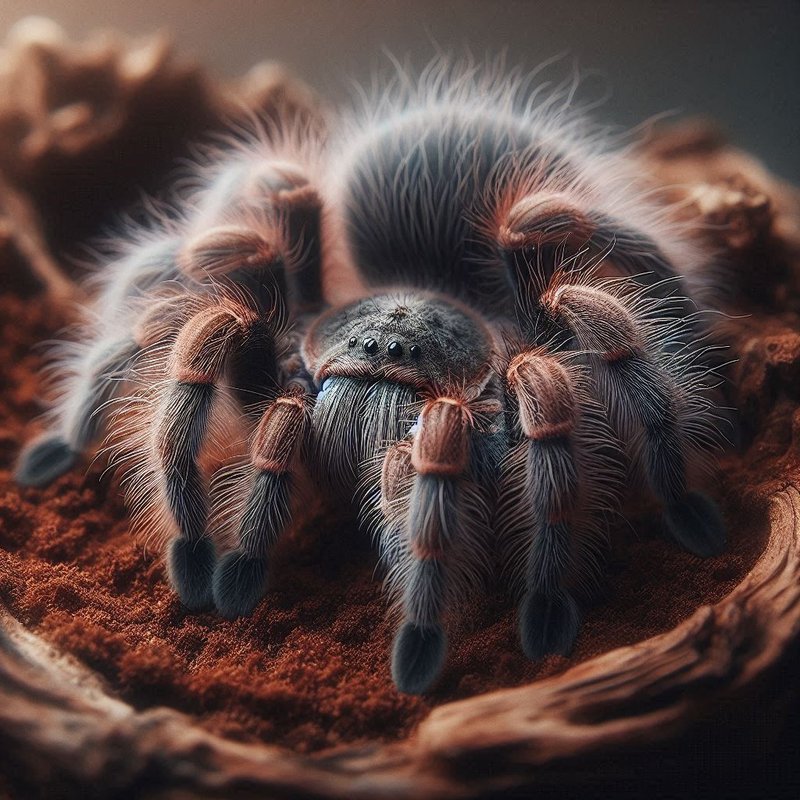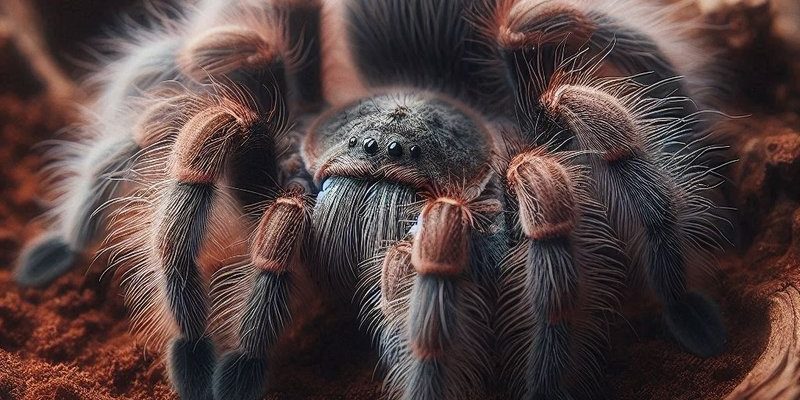
Let’s dive into the world of the Curly Hair Tarantula, or *Brachypelma albopilosum* as the scientists call it. These fascinating arachnids are native to Central America, specifically found in countries like Honduras, Nicaragua, and Costa Rica. So, if you’re a fan of exotic pets or just love learning new and interesting facts, let’s explore what makes this tarantula stand out in the spider world!
Physical Characteristics of the Curly Hair Tarantula
When you first see a Curly Hair Tarantula, the first thing that catches your eye is its distinctive curly hair. These hairs aren’t just for decoration; they serve a purpose! The curly hairs help the spider sense its environment and can even be used defensively. When threatened, a Curly Hair Tarantula will rub its hind legs against its abdomen, releasing these urticating hairs to irritate potential predators. It’s like having its very own built-in defense mechanism!
The coloration of the Curly Hair Tarantula can vary quite a bit. Most of them have a mix of brown and black, which helps them camouflage in their natural habitat. This spider grows to about 4 to 5 inches across, making it a manageable size for a pet. Just picture it perched confidently in its tank, with those fuzzy legs stretching out, ready to explore or curl up in its favorite hiding spot.
One charming feature of these tarantulas is how their appearance changes as they mature. Juveniles start off with lighter colors, and as they age, their distinct curly hair becomes more pronounced, making them even cuter. When you think about it, it’s like watching a pet grow and change over time—each stage comes with its own charm!
Habitat and Behavior
Curly Hair Tarantulas thrive in various habitats ranging from dry deserts to humid rainforests. They’re primarily ground-dwelling creatures, often found hiding under logs or burrowing into the ground. Here’s the thing: They are fairly adaptable and can live in a variety of environments as long as the conditions are right—think of it as a spider that can handle both a cozy home and a wild adventure.
In captivity, these tarantulas require a suitable enclosure that mimics their natural habitat. A substrate for burrowing, along with some places to hide, is crucial for their comfort. They often create burrows or take refuge in caves to feel safe. This behavior is a big reason why many owners love keeping them—watching them dig and rearrange their homes can be quite entertaining!
Interestingly, Curly Hair Tarantulas are not as aggressive as one might think. In fact, they’re known for their laid-back temperament. If they feel threatened, they prefer to retreat rather than attack. Compared to some other tarantula species, they are quite peaceful and make great pets for beginners. Just imagine having a friendly little spider hanging out in its cozy home, watching the world go by!
Diet and Feeding Habits
Feeding a Curly Hair Tarantula can be both fun and fascinating. These spiders are carnivorous and mainly feast on insects. Crickets, roaches, and other small creepy crawlies make up the bulk of their diet. But don’t worry! If you keep one as a pet, feeding them isn’t complicated. You can usually find suitable food at pet stores.
When feeding a Curly Hair Tarantula, it’s essential to offer appropriately sized prey—nothing too big that it would struggle to manage. One handy tip is to feed them live insects, as this encourages their natural hunting instincts. Watching your tarantula stalk and pounce on its food can be quite a show!
What’s even more interesting is how often these spiders eat. In the wild, they might hunt down meals every few days, but in captivity, they can go longer without food. It’s all about understanding their behavior and providing them with a balanced diet to keep them healthy. Just think about being a chef for a tiny, furry creature—it’s a rewarding experience!
Care and Maintenance
If you’re considering a Curly Hair Tarantula as a pet, you’ll want to understand the basics of their care and maintenance. First things first, their habitat should be clean and safe. Regular substrate changes and spot cleaning are essential for keeping things hygienic. A simple setup with a few hiding spots, some heat, and humidity control can create a perfect environment.
Temperature is vital for these tarantulas. Ideally, they should live in conditions ranging from 75 to 85°F (about 24 to 29°C). A heat source like a heat mat can help maintain this warmth. Humidity is also important, so misting their enclosure occasionally will keep the air moist—just like a refreshing rain in the rainforest!
Handling a Curly Hair Tarantula should be done with caution. While they are generally calm, it’s still important to handle them gently. Use a soft, flat surface to encourage them to walk onto your hand, and always approach them from the side—not from above. It’s like giving them a gentle invitation to step out of their world and into yours!
Curly Hair Tarantula Myths and Facts
There are quite a few myths swirling around tarantulas, especially when it comes to the Curly Hair variety. One common misconception is that tarantulas are all dangerous. While they do have fangs and can bite, their venom is relatively mild, and they generally prefer to retreat than attack. Honestly, for most enthusiasts, they’re more fascinating than fearsome!
Another myth is that tarantulas are hairy because they are dirty. The truth is, those curly hairs serve multiple purposes, from sensing their environment to acting as a defense mechanism. So next time you see a Curly Hair Tarantula, remember that its fuzzy exterior is a testament to its awesome survival skills!
It’s also worth noting that Curly Hair Tarantulas can live quite a long time—up to 20 years in captivity. That’s quite a bit of spider companionship! Just think about it: you could be bonding with your fuzzy friend for decades, sharing moments and learning from each other.
Why Choose a Curly Hair Tarantula as a Pet?
So, why should you consider a Curly Hair Tarantula as a pet? For starters, they are one of the best options for beginners. Their calm nature and ease of care make them a favorite among new spider owners. Plus, they don’t require as much attention as some other pets, allowing you to enjoy their presence without feeling overwhelmed.
They also make for great conversation starters! Imagine having friends over and sharing stories about your Curly Hair Tarantula. People are often surprised to learn how interesting and complex these creatures are. You might even change someone’s mind about spiders altogether!
Lastly, keeping a Curly Hair Tarantula can teach valuable lessons about responsibility and empathy for living creatures. Caring for a pet—no matter how small—can be a rewarding experience. It encourages a deeper appreciation for nature and its many wonders, including the amazing world of spiders.
In conclusion, the Curly Hair Tarantula is not just an exotic pet; it’s a captivating creature with rich layers of personality, behavior, and beauty. Whether you’re a seasoned enthusiast or a curious beginner, these fuzzy friends have something wonderful to offer.

